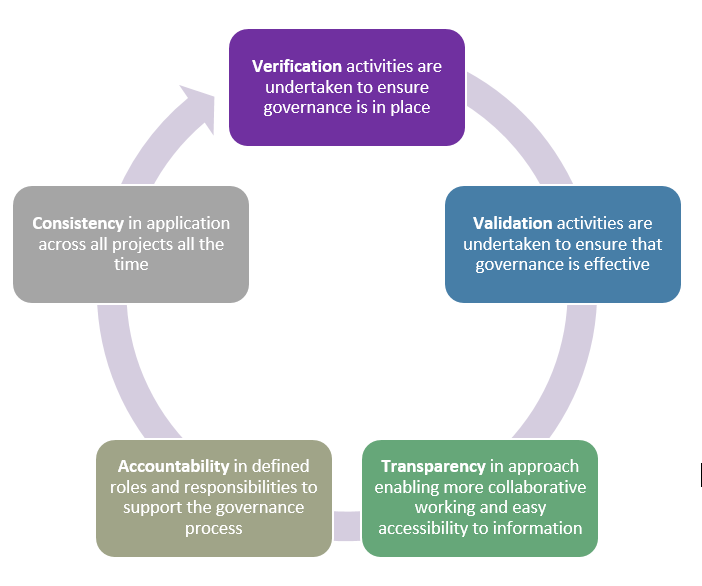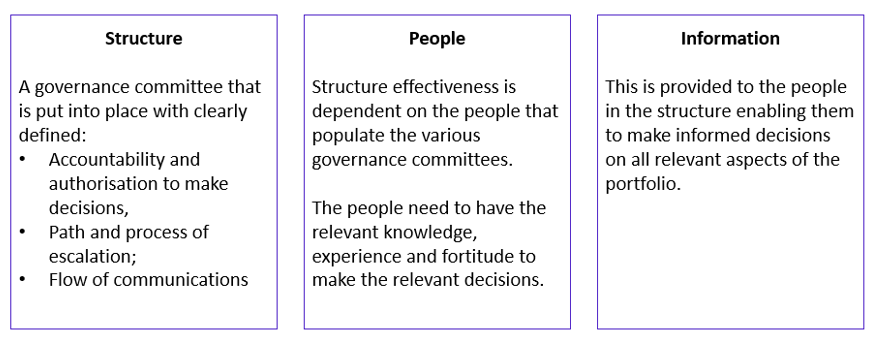As a result of the many corporate scandals that have taken place around the world, best-practice corporate governance guidelines have been developed in most countries. Good governance is central to ensuring that boards and committees are effective at leading the organisation they serve while also meeting their legal and compliance responsibilities. Although the question remains how effective are they at doing so? I write a lot about governance in the corporate sector and how ‘good governance’ measures are not adequately being implemented. This is evident across several industries where their poor governance has seen them in hot water. Although governance is not just a corporate issue, it is something that affects government agencies all the time, also known as public governance.
I’ve spent quite a bit of time working in government agencies (state and federal) across several initiatives and the issues I’ve seen firsthand around governance this year are the same issues I saw several years earlier. Given the number of issues being prevalent within the State Government lately, there seems to be plenty of opportunities to transition the culture and capabilities of those relevant agencies and improve governance as a result. So, let us start with the fundamentals of governance, even basic ideals around governance I think are forgotten sometimes.
What is Governance?
Governance is a mechanism designed to enable and support the delivery of change outcomes. Changes are delivered via portfolios, programmes and projects. Governance also interconnects with operations to ensure the correct support, integration, interaction and collaboration occur.
Purpose and Benefits of Governance
Portfolio Governance is proactively enabling decisions around defining and delivering the portfolio. Essentially, it is making sure that the right things are being done and that they are achievable. The key principles are:
- Ensuring initiatives are aligned to strategic objectives
- Adequately resourced
- Managing portfolio level progress effectively
- Managing dependencies holistically
- Managing and controlling conflicts
Governance will help deliver the following key benefits:
- Embedding robust project and programme processes across the organisation
- Ensuring that projects and programmes contribute to strategic objectives and targets
- Identify major dependencies between projects and programmes
- Monitor the progress of programmes and projects against key objectives
5 Principles of Good Governance

Governance Pillars
Governance consists of three primary constituents: Structure, people and information.

Agencies are over-burdened by public governance
It is our observation that some government agencies are overwhelmed with governance, in developing an overview of the current landscape in relation to governance bodies, one state government agency had over 25 different governance bodies, many of them:
- Act in isolation of one another
- Require an absurd number of reporting requirements that are impossible to keep up with
- Regularly introduce new governance frameworks that are dependent on individuals which in government changes frequently
- Are inefficient at managing vendor engagements through to delivery, starting strong then governance and oversight after vendor engaged is seldom managed well
- Provide no opportunity to test, learn and refresh frameworks and processes but are rolled out verbatim
Five reasons why good public governance is hard to obtain in government agencies
There are many reasons why good governance is hard to obtain but here are some of the specific challenges I have seen firsthand when dealing with government agencies:
- The governance approach for major projects and programs is often left to the consultancy delivering the work rather than following a guided approach
- Benefits of these initiatives are seldom managed through to realisation
- Operational staff are being allocated to Project Management positions with little to no support to be successful
- Agencies working in isolation of one another introducing new ‘processes’, ‘regulations’, ‘functions’ to introduce more governance
What more can be done to achieve good governance and appropriate culture within government?
Well firstly, it is not about adding more processes, it is about cleaning up the current landscape to then:
- Introduce an effective governance framework that is understood and adhered to and is embedded throughout all parts of the agency
- Ensure there are alignment and visibility of governance frameworks across inter-related agencies
- Create an audited transparent process to test governance and effect
- Train staff in project management basics to ensure those given the responsibility can succeed
- Ensure there is an effective method to trace back outcomes by consulting firms
Integrating good governance across Executive, Delivery and Operations
We need to reconsider the approach being taken around governance and ensure we are asking fundamental questions such as:
- Are there clear delegations of authority between the governance committee and management, with protocols for communication and decision-making?
- Is there a wide variety of skills making up key governance committees, not just operational but also delivery expertise?
- How frequently are governance improvements introduced, how are they tracked and managed?
- Are there suitable record-keeping systems in place that help to measure and track performance over time?
- How do you evolve to keep up with the fast-paced agencies you engage with?
Many of these questions have been taken into consideration as part of the development of the AMO Method™, something that has been necessary to ensure that a flexible approach to change can be introduced to organisations regardless of size.
Utilising the 3C’s, the AMO Method™ has been PROVEN to work in organisations big and small and agnostic of industry. It helps organisation by driving:

- Consistency: critical in reducing rework and minimising duplication and increasing productivity,
- Collaboration: bringing people together, getting it right the first time, and working transparently, and
- Coordination: working across the value chain, bringing it all together; utilising the right people at the right time, for the right outcomes.
The AMO Method assists to identify the change needed and then implement it in a consistent way, bridging the gap between current culture and that required to support a governance compliance culture that meets organisational requirements. It introduces clarity, transparency, and audit-ability in a way that supports evolution.
There seems to be plenty of opportunities to transition the culture and capabilities of relevant agencies, the question is will they take the time to step back and think about how to do it or will they continue to work in a repetitive cycle? What more can be done to achieve good governance and appropriate culture within these agencies?
To make sense of the chaos around the structure in your environment, book in a free strategy session with us and we can show you just how structure and governance improved fast as a result of our model.
For a free strategy session or to inquire about upskilling your teams on good governance, get in contact with us here.
For access to our global white paper series on all things governance and the PMO, you can register here for full access to all 9 chapters.
